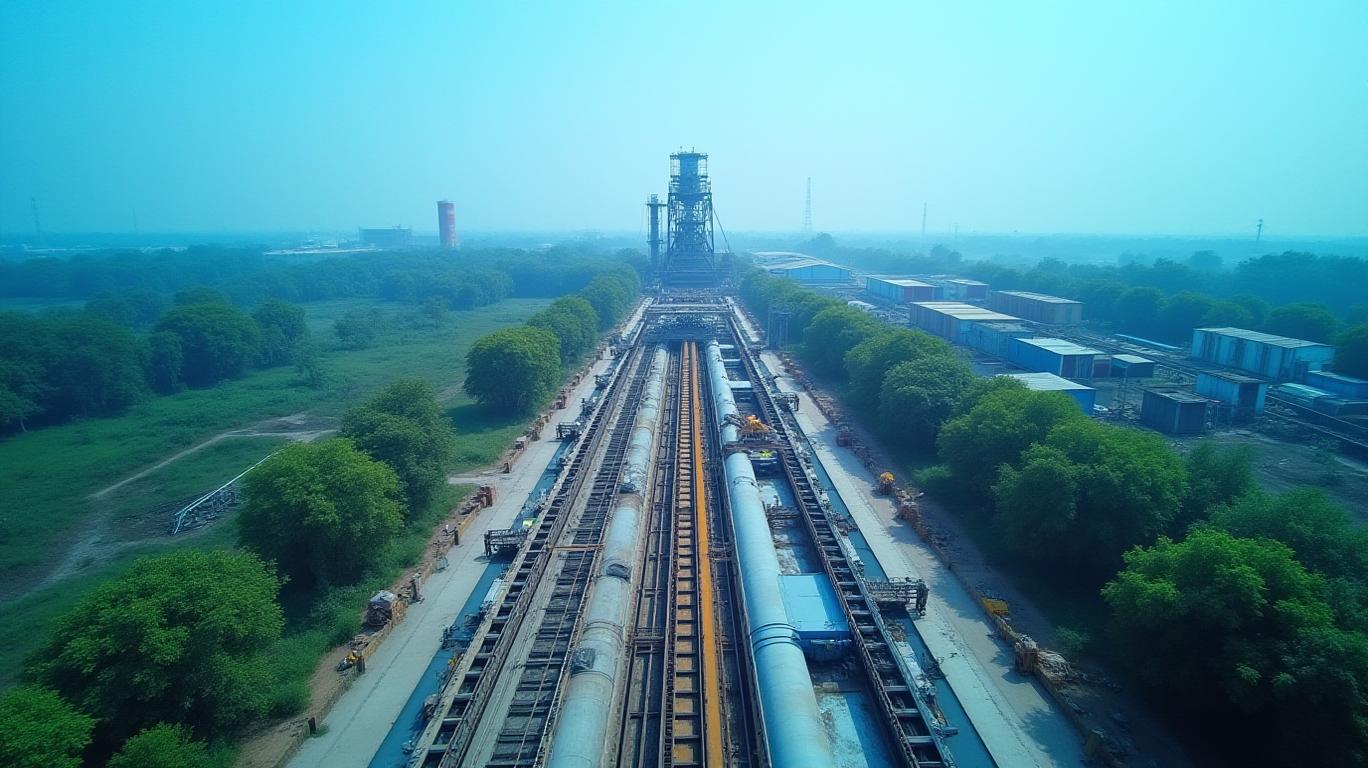JSW Steel: Navigating Import Storms with Cost Discipline and Pricing Power
The Indian steel sector faces a perfect storm—global overcapacity, cheap imports, and volatile raw material costs. Yet JSW Steel stands out as a beacon of resilience, leveraging cost-cutting prowess and pricing discipline to position itself for a Q2 rebound. This article explores how the company's strategic moves could turn the tide, making it a compelling investment opportunity.

Cost Reduction: The Foundation of Recovery
JSW's recent financials highlight a sharp focus on cost management amid headwinds:
- Raw Material Gains: Coking coal costs dropped 18% year-on-year to $270/tonne, directly boosting margins. The company's backward integration—45% of iron ore sourced internally—reduces reliance on volatile markets.
- Capex Optimization: A disciplined ₹20,000 crore capex plan for FY2026 prioritizes high-return projects like the 30 MTPA Odisha slurry pipeline. This project, now transferred to JSW Infrastructure, slashes long-term operational costs while offloading ₹3,400 crore in capex.
- Operational Efficiency: Domestic capacity utilization held steady at 87% despite planned shutdowns, minimizing per-unit costs.
Pricing Power: Turning the Tide in Q2
While Q1 FY2026 saw a 64% YoY net profit dip to ₹845 crore due to one-time charges, pricing dynamics are now turning in JSW's favor:
- Domestic Demand Surge: India's status as a net steel importer masks a 14.9% YoY rise in domestic consumption. JSW's domestic sales grew 14% YoY to 5.31 million tonnes, benefiting from infrastructure spending (7.2% growth projected in FY2026).
- Export Strategy Adjustments: Exports fell 29% YoY to 10% of sales, but this reflects a deliberate pivot to prioritize higher-margin domestic projects. The company now focuses on value-added products (e.g., rebar for construction) rather than bulk exports.
- Contango Pricing Support: Futures markets signal a contango of ₹2,300/tonne through Q3, suggesting steel prices will rise post-monsoon. JSW's incremental price hikes in March-April 2025 will further amplify Q2 realizations.
Import Challenges: Mitigation Through Strategy
India's steel imports surged 48% YoY in FY2024-25, with Chinese steel undercutting domestic prices by 8-10%. Yet JSW's moves neutralize this threat:
1. Policy Advocacy: The company lobbied for—and benefited from—the 12% safeguard duty on imports, now deterring marginal players.
2. Domestic Market Focus: JSW's 87% capacity utilization ensures it can scale down production selectively, avoiding price wars.
3. Geopolitical Tailwinds: U.S. tariffs on Asian steel may redirect 1.8-2.3 million tonnes of displaced exports away from India, easing oversupply.
Why Q2 Could Be the Tipping Point
- Margin Expansion: Lower coking coal costs and higher domestic sales will lift EBITDA margins from 12.8% in Q1 to 15-16% in Q2.
- Infrastructure Catalysts: The ₹102 lakh crore National Infrastructure Pipeline will boost demand for JSW's construction-grade steel.
- Balance Sheet Strength: Net debt, while rising to ₹80,199 crore, is manageable given a debt-to-EBITDA ratio of 4.1x—improving as margins recover.
Investment Thesis: Buy the Dip, Play the Turnaround
JSW Steel trades at 5.2x EV/EBITDA, a 30% discount to its 5-year average. With cost controls intact and pricing power reasserting itself, this is a rare opportunity to buy a cyclical leader at a trough valuation.
Key Catalysts for Q2+:
1. Monsoon rains boosting rural demand.
2. Infrastructure projects absorbing 40% of domestic steel output.
3. Falling Chinese exports as their real estate sector stabilizes.
Final Word: Steeling for Growth
JSW Steel isn't just surviving—it's redefining resilience. With cost discipline embedded in every operation, pricing leverage emerging, and a fortress balance sheet, this is a buy for investors seeking a steel sector turnaround story. The storm of imports may rage, but JSW is the ship that's weathering the storm—and ready to sail into profit growth.
Act now before the recovery is priced in.
Risk Disclaimer: Steel demand hinges on infrastructure execution and global trade policies. Monitor geopolitical risks and raw material price volatility closely.

Comments
No comments yet